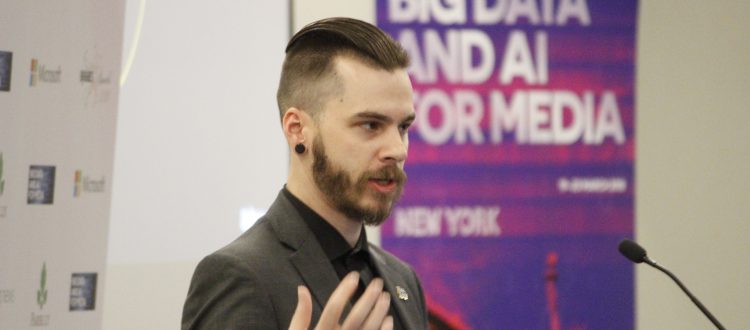Data and AI powers advertising, editorial and workflow at Washington Post
By Scott M. Scher, Columbia University

Joey opened with the comment that “the future is always boring once we get there…. That is always fun building things but at a strain point it’s a done”. He walked the crowed through a business school model of S-curves, something starts off really slow and then all of a sudden it just takes off and mature. He went through the PC and mobile internet and went into the new AI market. Big data and AI are the new new thing coming.

The Washington Post is to expand their Arc Publishing suite of data- and AI-driven technologies, including subscription growth, automated headlines and text, visual storytelling. When it comes to product creation, they are focused on mixed reality and AI.
The main products allowing them to achieve these goals are Heliograph, automated storytelling from real-time data. With this product they will be able to create automated writing on low engagement topics. Heliovideo-machines produce automated videos by analyzing key words, word count, and confidence of a story. This significantly cuts down the amount of time it takes to create a video to go along with stories. This product is set to become a part of Arc in 2019.
The next innovative product the Washington Post is using is Atlas, which connects stories and experience using machine learning. It does context analysis, creates recommendation bundles, track stories read and page views. This creates a higher level of engagement, enhances editorial input, and generates story highlights, saving readers time, and provides highlights of an article for readers. This product compiles a users activity in real-time and historically in order to make smart recommendations to its users. Recommendations are made based on reading history, current story being read, and even weather. Using IP location they can determine if the weather has affected the types of stories the reader is getting. They also use time of day, platform, and device in order to create a complete signal to inform them on what to recommend.


